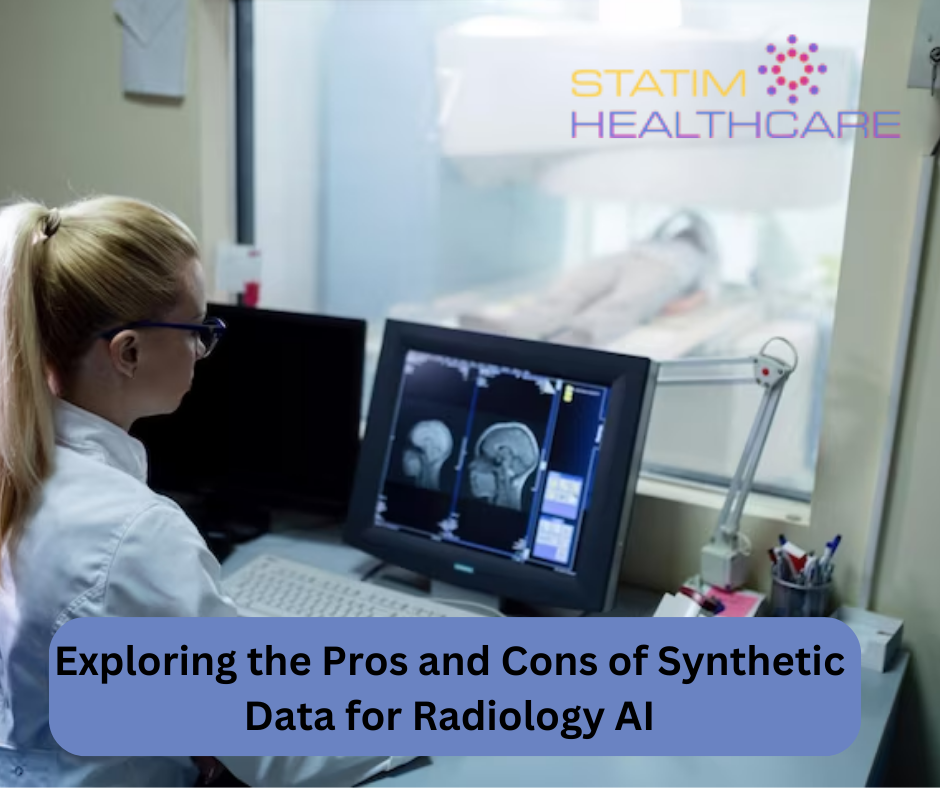In recent years, the field of artificial intelligence (AI) has made significant strides in various industries, including healthcare. AI has shown great potential in radiology to revolutionize online radiology services in USA. One essential aspect of AI development is the availability of high-quality datasets for training and testing algorithms. However, obtaining large and diverse datasets can be challenging due to privacy concerns and data scarcity. This is where synthetic data comes into play.
Overview of Synthetic Data
Synthetic data is artificially generated data that mimics real-world distributions and characteristics. In the context of radiology AI, synthetic data is created to resemble medical images and associated clinical information, enabling researchers and developers to access a vast pool of data without compromising patient privacy.
Generating synthetic data involves sophisticated algorithms that can recreate realistic medical images based on existing datasets. These synthetic images have statistical properties, texture, and structure similar to real images, making them suitable for training and validating AI models.
Benefits of Synthetic Data for Radiology AI
Enhanced Privacy and Data Security
Patient data privacy is of utmost importance in healthcare. The use of synthetic data allows researchers and AI developers to work with data that is not directly linked to individual patients. It helps to prevent data breaches and ensures compliance with data protection regulations while advancing AI research.
Increased Availability of Diverse and Representative Datasets
Obtaining large and diverse datasets is crucial for developing robust AI algorithms. Synthetic data offers the advantage of augmenting existing datasets, providing a broader range of medical conditions and image variations. This, in turn, improves AI models’ performance and generalization capabilities.
Accelerated Training and Testing of AI Algorithms
Training AI models on real data can be time-consuming and resource-intensive. Using synthetic data, researchers can quickly generate additional samples, speeding up the training process and allowing faster AI model development iteration.
Facilitated Algorithm Validation and Benchmarking
Synthetic data enables the creation of standardized benchmark datasets with known ground truth labels. This ensures the fair and transparent comparison of different AI algorithms and facilitates the validation of AI models against well-defined metrics.
Cost-Effectiveness and Scalability
Collecting real medical images and associated clinical data can be expensive and time-consuming. Synthetic data offers a cost-effective alternative that scales easily, allowing researchers to access large volumes of data without the constraints of data acquisition, making USA radiology diagnostics better.
Dangers and Limitations of Synthetic Data for Radiology AI
Potential Biases and Limitations in Data Generation
Generating synthetic data relies heavily on the quality and representativeness of the underlying real data. Biases in the real data may be inadvertently transferred to the synthetic data, leading to biased AI models.
Risk of Unrealistic and Biased Model Performance
AI models trained solely on synthetic data may not fully capture the complexity and variability of real-world medical images. As a result, their performance in real clinical settings may not be as accurate as expected.
Challenges in Capturing Real-World Variability and Complexity
Medical imaging encompasses a wide range of conditions and scenarios. While synthetic data can mimic certain patterns, it may struggle to replicate rare or novel cases crucial for comprehensive AI training.
Ethical Considerations and the Need for Transparency
Synthetic data raises ethical questions about the fidelity of the generated data and its implications in clinical decision-making. Full transparency in using synthetic data is essential to ensure the safety and well-being of patients.
Best Practices for Using Synthetic Data in Radiology AI
Ensuring Data Quality and Reliability
Careful validation and quality control of real and synthetic data are essential to
ensure the accuracy and reliability of AI models trained on synthetic data. Thoroughly evaluate AI algorithms’ performance using real and synthetic data against ground truth labels to identify any biases or limitations.
Augmenting Real Data with Synthetic Data
Rather than relying solely on synthetic data, combining it with real data is recommended to create a more comprehensive and diverse training dataset. This approach can help mitigate synthetic data limitations and improve AI models’ generalization capabilities.
Collaboration and Data Sharing
To build large-scale, high-quality datasets, promote collaboration and data sharing among researchers, healthcare institutions, and AI developers. By pooling resources and expertise, synthetic data generation can be improved, ensuring a better representation of real-world clinical scenarios.
Continuous Model Evaluation and Improvement
Regularly evaluate AI models trained on synthetic data using real-world clinical data. Monitor the performance of the models in real-time clinical settings and iterate on the algorithms to address any limitations or biases.
Ethical Considerations and Patient Consent
Adhere to ethical guidelines and obtain proper patient consent when using synthetic data. Ensure transparency in the use of synthetic data, informing patients about the purpose and potential impact of their data in AI research.
Conclusion
Synthetic data offers valuable opportunities and challenges in radiology reporting online. It enhances privacy, provides diverse datasets, accelerates training, and enables benchmarking. However, potential biases, limited real-world replication, and ethical considerations should be addressed.
To maximize its benefits, ensure data quality combined with real data, encourage collaboration and continuously evaluate and improve models. Statim Healthcare, the best radiologist specialist, promotes the responsible use of synthetic data to advance radiology AI, aiming for reliable and ethical AI models that improve medical imaging and patient care.

